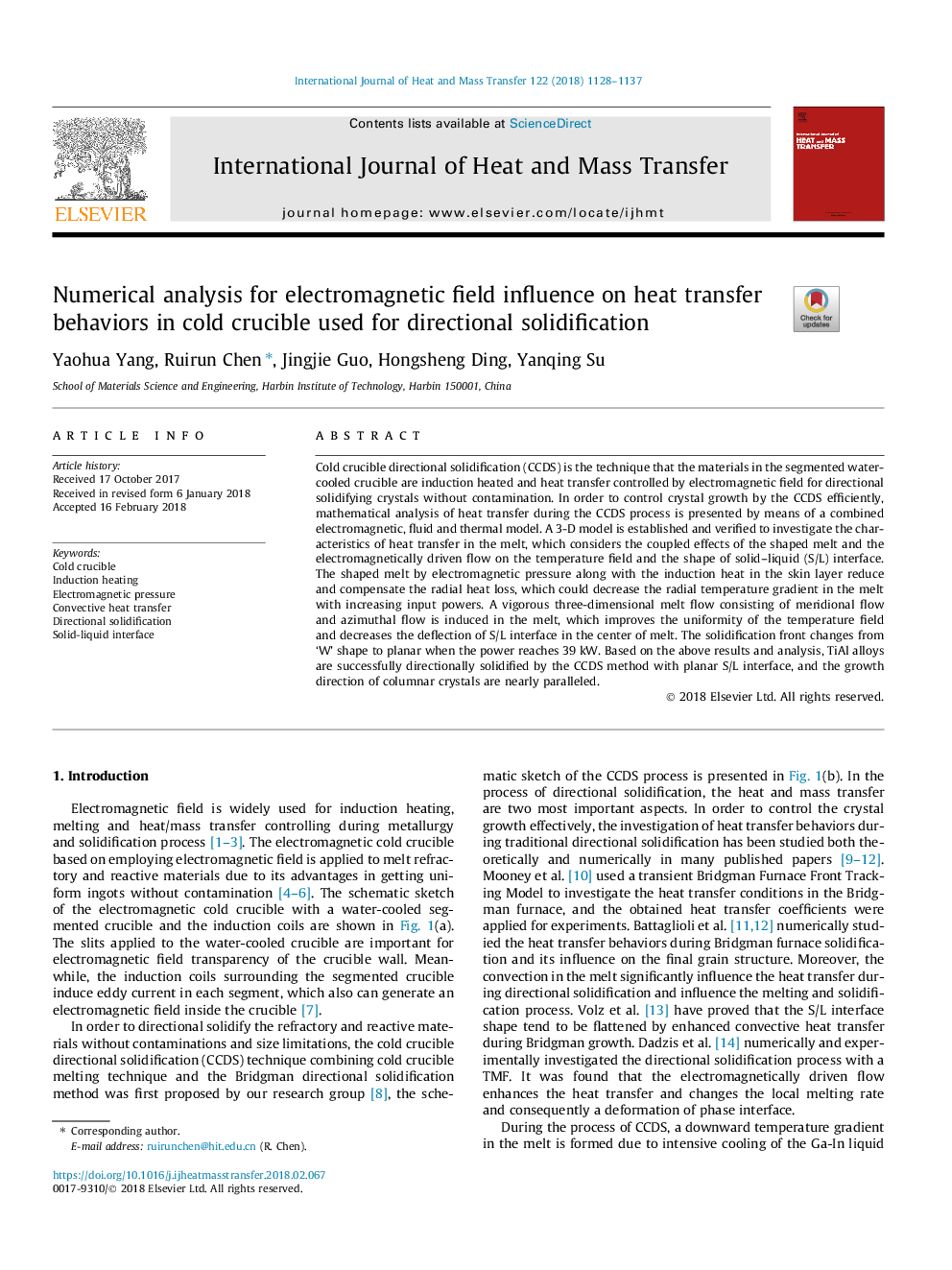| Article ID | Journal | Published Year | Pages | File Type |
|---|---|---|---|---|
| 7054473 | International Journal of Heat and Mass Transfer | 2018 | 10 Pages |
Abstract
Cold crucible directional solidification (CCDS) is the technique that the materials in the segmented water-cooled crucible are induction heated and heat transfer controlled by electromagnetic field for directional solidifying crystals without contamination. In order to control crystal growth by the CCDS efficiently, mathematical analysis of heat transfer during the CCDS process is presented by means of a combined electromagnetic, fluid and thermal model. A 3-D model is established and verified to investigate the characteristics of heat transfer in the melt, which considers the coupled effects of the shaped melt and the electromagnetically driven flow on the temperature field and the shape of solid-liquid (S/L) interface. The shaped melt by electromagnetic pressure along with the induction heat in the skin layer reduce and compensate the radial heat loss, which could decrease the radial temperature gradient in the melt with increasing input powers. A vigorous three-dimensional melt flow consisting of meridional flow and azimuthal flow is induced in the melt, which improves the uniformity of the temperature field and decreases the deflection of S/L interface in the center of melt. The solidification front changes from 'W' shape to planar when the power reaches 39â¯kW. Based on the above results and analysis, TiAl alloys are successfully directionally solidified by the CCDS method with planar S/L interface, and the growth direction of columnar crystals are nearly paralleled.
Keywords
Related Topics
Physical Sciences and Engineering
Chemical Engineering
Fluid Flow and Transfer Processes
Authors
Yaohua Yang, Ruirun Chen, Jingjie Guo, Hongsheng Ding, Yanqing Su,
